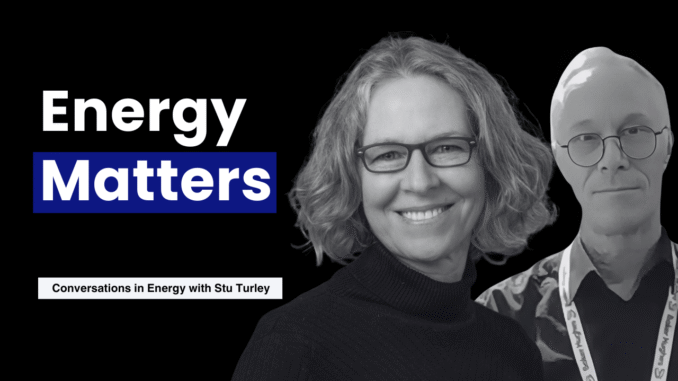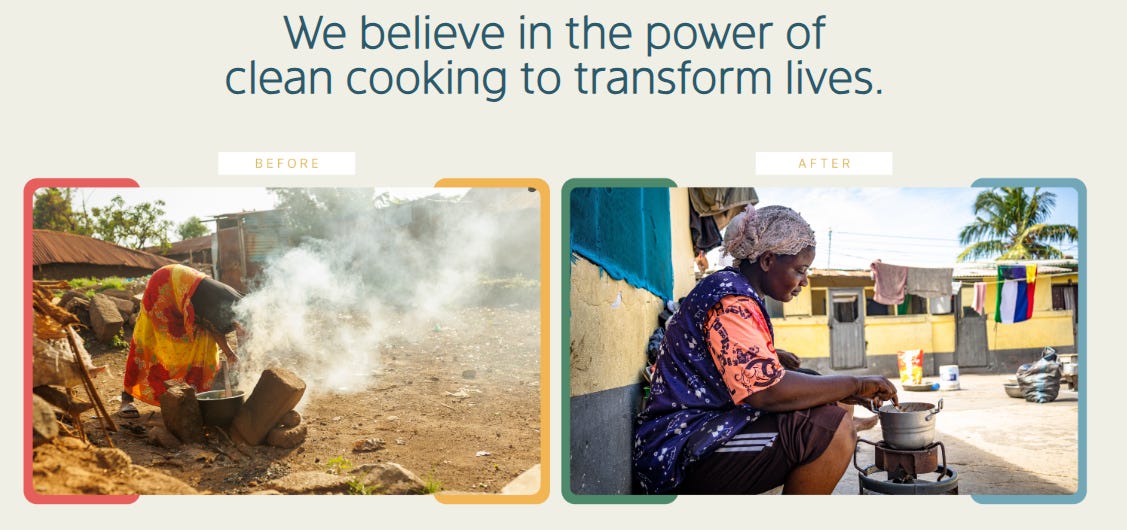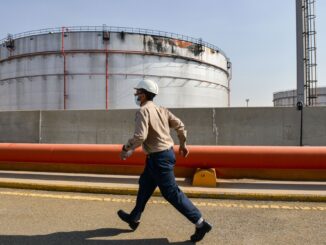
In this episode of Energy Newsbeat – Conversations in Energy, Stu Turley sits down with Cyrus Brooks of RBAC and Anne Atkinson Hyre, Executive Director of the Bettering Human Lives Foundation, to tackle the global energy poverty crisis. Over 2 billion people still rely on firewood, charcoal, or dung for cooking, facing severe health risks, environmental damage, and lost economic opportunities.
Anne explains how the foundation provides low-interest loans to local LPG entrepreneurs, helping households and schools transition to safer, cleaner, and more efficient cooking fuels. Cyrus discusses how energy access enables entrepreneurship, economic growth, and improved quality of life.
Learn how practical, sustainable energy solutions are transforming communities and truly bettering human lives.
Thank you, Anne and Cyrus, for stopping by the podcast – I had an absolute blast, and this is making a difference in people’s lives – Stu
Links / Resources:
Bettering Human Lives Foundation: https://betteringhumanlives.org

Connect with Anne here:https://www.linkedin.com/in/anne-atkinson-hyre-a6b1848/
- RBAC: https://rbac.com/
Connect with Cyrus on his LinkedIn here:https://www.linkedin.com/in/cyrus-brooks-03274713/
Thank you, Anne and Cyrus, for stopping by the podcast – I had an absolute blast, and this is making a difference in people’s lives – Stu
Highlights of the Podcast
00:00 – Intro
1:05 – Cyrus Brooks on RBAC & GasTech Milan
4:28 – Anne Hyre on Bettering Human Lives & energy poverty
6:16 – LPG impact on African households & jobs
9:45 – Economic approach to solving energy poverty
10:00 – Foundation’s low-interest loans explained
13:46 – Scaling LPG businesses in Kenya, Ghana, Zambia
15:18 – Goal: 1M households & 1,000 schools by 2030
17:51 – Loan benefits vs commercial banks
18:39 – How to donate & support the foundation
21:06 – Success stories & African Energy Chamber model
24:25 – Cyrus: energy drives commerce & prosperity
25:49 – Environmental impact: deforestation & emissions
26:30 – LPG cookstoves improve health, time & environment
27:32 – Anne shares personal experience & passion
28:20 – Upcoming trips & speaking events
28:55 – Closing thoughts from Anne & Cyrus
30:19 – Show notes & links
On a side note, the work that Anne and the Bettering Human Lives Foundation are doing is critical in the areas they have touched. We need worthwhile projects like this to be funded and make a difference.
They have been working in Africa and have different leaders in each country to work with, and we can compare this to India, where the Government has stepped up.
Under Narendra Modi’s leadership since 2014, India’s energy policies have focused on expanding access to electricity, clean cooking fuels, and renewable energy sources as part of a broader push for energy security, affordability, and sustainability. These initiatives have directly addressed energy poverty—defined as the lack of reliable, safe, and affordable energy for essential needs like lighting, cooking, and heating—by targeting underserved rural and low-income households. Key programs include the Pradhan Mantri Sahaj Bijli Har Ghar Yojana (Saubhagya) for universal household electrification, the Pradhan Mantri Ujjwala Yojana (PMUY) for subsidized LPG connections, and aggressive renewable energy expansion under frameworks like the National Solar Mission and the International Solar Alliance. These policies have improved health outcomes (e.g., reducing indoor air pollution), freed up time for education and work (especially for women), and enabled economic activities such as small businesses and agriculture through reliable power.
Key Policies and Their Mechanisms for Alleviating Energy Poverty
- Electrification via Saubhagya (Launched 2017): This scheme aimed to connect all un-electrified households, prioritizing rural areas with grid extensions and off-grid solar solutions. It provided free or subsidized connections to below-poverty-line (BPL) families, addressing barriers like high upfront costs. By improving lighting and appliance access, it has reduced reliance on kerosene (a health hazard) and enabled productive uses like irrigation pumps and home-based enterprises, indirectly boosting incomes.
- Clean Cooking via PMUY (Launched 2016): Targeted at BPL women, this provides free LPG connections, cylinders, and refills to replace traditional biomass fuels (e.g., wood, dung). It has reduced time spent collecting fuel (often 5-10 hours weekly per household), lowered respiratory diseases, and allowed more time for wage-earning activities.
- Renewable Energy Expansion: India increased renewable capacity from ~35 GW in 2014 to over 120 GW by 2022, with solar jumping from 3 GW to 50 GW and wind from 21 GW to 40 GW. Initiatives like PM-KUSUM (solar pumps for farmers) and PM Surya Ghar (rooftop solar with free electricity) promote decentralized, affordable energy, reducing costs (solar tariffs as low as ₹2.44/kWh) and creating green jobs. This has made energy more sustainable and accessible in remote areas, supporting long-term poverty reduction.
These efforts have collectively moved households up the “energy ladder” by shifting from polluting, inefficient sources to modern ones, fostering economic mobility. However, challenges persist, including supply reliability (e.g., outages), affordability of refills, and voltage issues, with two-thirds of households still facing some form of energy poverty in 2025 due to inconsistent access
Number of People Elevated Out of Energy Poverty
Exact figures for “energy poverty” vary by definition (e.g., access-based vs. multidimensional, including affordability and reliability). Pre-2014, rural energy poverty rates were around 57% (vs. 22% income poverty), and urban 28% (vs. 20%), affecting hundreds of millions. Modi’s policies have significantly reduced this through near-universal access:
- Saubhagya: Electrified 2.86 crore (28.6 million) households, benefiting approximately 129 million people (assuming an average household size of 4.5). This achieved nearly 100% household electrification by 2019, up from ~80-90% in 2014, with 32 million rural households in key states advancing on the energy ladder since 2015.PMUY: Provided over 10 crore (100 million) LPG connections, reaching ~450 million people in BPL households. Rural LPG usage as primary cooking fuel rose from 15% in 2015 to 39% in 2018 and ~97% overall access by 2022, though stacking with biomass persists in 81% of cases due to costs.en.wikipedia.org
- Overall Impact: Studies estimate 32 million rural households ( ~144 million people) lifted from basic energy deprivation since 2015 in energy-deprived states, with national electrification and clean cooking access contributing to broader poverty reduction. India’s extreme poverty (not solely energy-related) fell from 27.1% (344 million people) in 2011-12 to 5.3% (75 million) in 2022-23, lifting 270 million people—partly attributed to energy-inclusive welfare like free electricity and gas.timesofindia.indiatimes.com
However, critics note that while access has improved, true alleviation is incomplete, as hardships (e.g., during COVID-19) led to reversion to polluting fuels in ~50% of cases, and official claims may overstate progress by ignoring reliability.
Number Achieving Sustainable Income Due to These Changes
Energy access has indirect but significant effects on income by enabling job creation, productivity, and cost savings. Direct links include:
- Job Creation in Renewables: The sector employed 1.02 million people in 2023, up significantly since 2014, with breakdowns like 453,000 in hydropower, 318,600 in solar PV, and 52,200 in wind. Schemes like PM Surya Ghar project 17 lakh (1.7 million) additional direct jobs in manufacturing, installation, and maintenance, while PM-KUSUM anticipates 7.55 lakh job-years, enhancing farmers’ incomes through solar irrigation (reducing diesel costs by up to 50%).
- Broader Economic Benefits: Improved energy access has supported 270 million people escaping extreme poverty overall, with energy schemes contributing via time savings (e.g., women entering the workforce) and business opportunities (e.g., electrified shops extending hours). Rural studies show electrified households report higher satisfaction and appliance use, correlating with income gains, though limited pre-scheme data hinders precise attribution. Critics argue job quality remains low (90% informal), with inequality persisting—the top 1% hold 40% of wealth—despite welfare like free cylinders reaching 800 million.apnews.com
In balanced terms, these policies have driven substantial progress, substantiated by government data and international reports (e.g., IEA, World Bank), but sustained impact depends on addressing affordability and grid reliability.
The Bottom Line:
A special shout-out to Cyrus Brooks, RBAC, for helping set this podcast up, as well as the one with NJ Ayuk, Executive Chairman at the African Energy Chamber.
Delivering the lowest-cost kWh to everyone on the planet with the least environmental impact is the mission.






